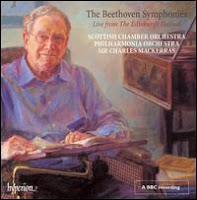Given that Brian Newbould’s orchestrated sketches of D.708a
have already been recorded more than once, this was indeed intriguing. It turns
out that Professor Newbould has made a ‘completion’ of the sketches that turn
the 18 minute orchestrated fragments into a full blown 35 minute symphony.
Schubert began thirteen symphonies but amazingly only
finished seven. This leaves a remarkable six symphonies left in various stages
of incompletion. Symphony number eight is, of course, the famous ‘unfinished’ but
where do the others feature in Schubert’s chronological list of compositions?
It is useless to try to put numbers to these incomplete
works, though D.936a is given the number ten. Instead the catalogue number D is
given. These are known as Deutsch numbers after Otto Erich Deutsch who first
compiled a catalogue of Schubert’s works, published in 1913.
The symphonies are thus in the following order:
Sketch for Symphony D.2b
No.1 in D major D.82
No.2 in Bb major D.125
No.3 in D major D.200
No.4 in C minor D.417 ‘Tragic’
No.5 in Bb major D.485
No.6 in C major D.589 ‘Little C major’
Symphonic Fragments in D major D.615
Symphonic Fragments in D major D.708a
No.7 in E minor/major (incomplete) D.729
No.8 in B minor (incomplete) D.759
‘Unfinished’
No.9 in C major D.944
‘Great C major’
No.10 in D major D.936a
The Symphonic Fragments D.708a were written only in piano
score with the third movement scherzo nearly complete but the other three movements
only partly sketched.
It seems evident in this work that Schubert was trying to
move from a classical model to something new. Whilst he doesn’t really break
away from the style of his earlier symphonies, he is certainly striving for the
mature style that he developed by the time of the Great C major.
In D.708a an orchestra the size of Haydn, Mozart and early Beethoven
is used which is in keeping with the still classical nature of the work.
During the interval of Thursday’s concert (29th March 2012) Professor Newbould explained his method of providing additional material to complete the work as well as speculating on the reasons why Schubert probably ran into trouble with the symphony, in that he had almost certainly had problems over the choice of some of the instrumentation. It seems that one of the problems that probably arose, in the finale, was over whether to use trombones, which he went on to include in his 7th symphony started very soon after putting aside D.708a.
In this ‘completion’, Brian Newbould opts to leave out
trombones. Many other choices had to be made, of course, given that it is only the
third movement that was nearly complete in piano score.
Indeed, in my Philips recording of the work, by the Academy
of St Martins in the Fields conducted by Neville Marriner, the first movement fragment
lasts just 2’ 52’’, the second movement 3’ 25’’, third movement scherzo lasts 8’
11’’and the fourth movement only 3’ 10’. Compare this to the ‘completed’ work, performed
yesterday, which is around 11’12’’, 7’53’’, 7’36’’ and 7’50’’ respectively (the
third movement was obviously taken faster than on my recording).
Thursday’s performance of this symphony by the BBC
Philharmonic Orchestra conducted by Juanjo Mena in their new venue at Salford
Quay was well worth all the expectation, with a wonderfully vibrant and
purposeful first movement allegro vivace and a beautifully expressive lyrical
second movement andante con moto. The scherzo allegro vivace had a really light
touch followed by a fleet footed presto that really danced along.
I hope that this completion and the others commissioned by the
BBC will be recorded.
I actually missed this broadcast on Thursday but thanks to
the BBC iPlayer I managed to hear it. You too can still hear it whilst it is on
iPlayer. www.bbc.co.uk/iplayer/radio
See also: A new Schubert completion. http://theclassicalreviewer.blogspot.co.uk/2012/03/new-schubert-completion.html
See also: A new Schubert completion. http://theclassicalreviewer.blogspot.co.uk/2012/03/new-schubert-completion.html









